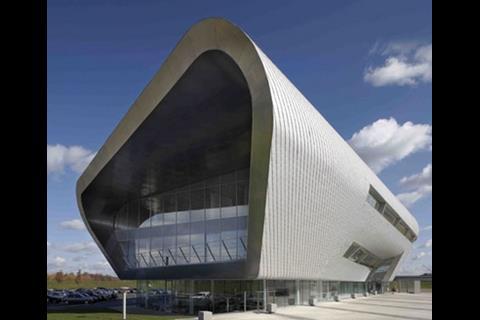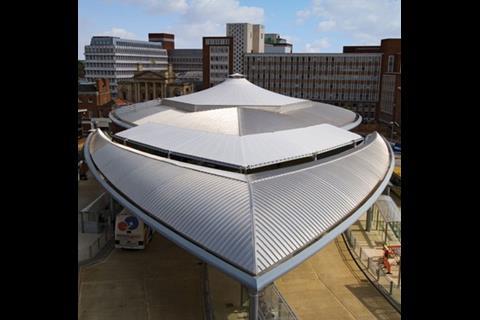Jonathan Clemens, the managing director of Kalzip, explains why the firm justifies the title ‘the daddy of standing seam roofing’. For a full guide to suppliers of sustainability products, log on to www.building.co.uk/specifier
Kalzip is the building systems division of Corus that produces aluminium standing seam roof and cladding systems. It is a standalone business unit within Corus with 90% of its business coming from standing seam roofing, and the other 10% from cladding. Managing director Jonathan Clemens says Kalzip is “the daddy of standing seam roofing”, a claim backed by the fact that it has been around the longest, for 40 years. The firm has five plants around the world with 550 employees, 149 of whom are based in the UK. It turned over £110m last year with £28m of that coming from the UK market.
Jonathan Clemens, Managing Director, Kalzip
What's so special about Kalzip?
The way we differentiate ourselves from competitors is on service and reducing risk for the contractor. We design and manufacture a complete system where all the elements including the insulation, vapour control and roof covering work together. We assist the client and specifier with the thermal, structural, acoustic and condensation analysis and design. If you talk to main contractors the second biggest source of problems after M&E is the roof.
What types of roof is Kalzip suitable for?
We can do any shape of roof, including ones curved in three dimensions. We can produce the sheets in the factory or roll them to any length on site. The longest sheet we ever did was 180m for a warehouse in Street [Somerset].
Where could you see a Kalzip roof?
We have done 70,000m2 of roof at Heathrow Terminal 5. Because of its size there is quite a lot of thermal movement. We used a new type of clip that allows the roof to move more easily. We have done most of the football stadiums, with the exception of Wembley. We are glad about that. Other projects include the Welsh assembly, the Zaha Hadid BMW factory in Germany and Albion Riverside, a residential block of flats in Battersea. This was challenging as each of the 1,250 sheets was curved to a different radius in two planes.
What about other types of project?
Our average project size is about 1,500m2. Our key sectors are education, healthcare, retail and residential. Education is way out in front followed by healthcare – we are doing a lot of Lift schemes. Last year retail was quiet, but we are anticipating it will be better this year. It does depend on the clients, as we work with the same people again and again.
How do you work with specifiers?
On signature projects we are involved right at the beginning, determining whether Kalzip is suitable, as we don’t want to waste our or the client’s time. We get as close as possible to the design team as its much more about technical solutions and pushing the boundaries. We work differently on PFI work. PFI is very much about what has been done before and value engineering to minimise maintenance and capital costs yet meeting the specification.
Has the new Part L had an impact?
Two years ago we thought U-values on roofs would be down to 0.16W/m2K or even 0.13W/m2K, but that isn’t how it has turned out as specifiers can trade off an efficient M&E system for a less efficient roof. We do have products to give U-values of 0.16W/m2K but these cost a lot of money. If U-values did go down to 0.16W/m2K we would have to scale up production, but we don’t think it will go that way.
What about new innovations?
Our big money is going into off-site, modular solutions. We set up off-site division Hi Point last year as we see benefits not only in quality but also in health and safety. The most extreme example is where we make the frame and the entire roof in the factory, take it to site and lift it into place. The next level down is to take a kit of parts to site and build it on the ground, then crane it into position. The third is to work with a frame already in place.
How have you been affected by price rises in raw materials?
We have had six months of crazyland where aluminium prices went up a lot. If we issue a quote for the next 30 days we feel honour-bound to stick to it. We got hit a couple of times last year, but we got through it and made money, but when you have two years of stability it is bit of a shock.
Topics
Specifier 02 February 2007

- 1
- 2
- 3
- 4
 Currently
reading
Currently
reading
Who makes it






































No comments yet